.jpg)

.jpg)
The HTC Desire 820 runs Android 4.4.2 KitKat, with HTC's own Sense UI layer on top, matching the One (M8) and the Desire 816. HTC Sense 6 is feature-rich and offers a smooth and fluent user experience.
Power toggles made it to the notification area

 Custom app switcher complete with a shortcut for the Running apps screen
Custom app switcher complete with a shortcut for the Running apps screen
Performance
The HTC Desire 820 runs Android 4.4 KitKat with Sense 6 out of the box. It's powered by a Qualcomm MSM8939 Snapdragon 615 chipset with four Cortex-A53 processor cores at 1.5GHz and another four, clocked at 1.0GHz and Adreno 405 GPU. It has 2GB of RAM.
This is a notable improvement over its predecessor, the Desire 816, but interestingly enough, the fairly comparable eight A53 cores do not fair all that well against the four Cortex A7 ones, found inside the A7. This might just be due to the higher clock rate on the Snapdragon 400, but all in all, in a lot of respects the Desire 820 does not seem to offer as big of a performance increase as we would have liked to see.
We kick off with a simple CPU benchmark that, interestingly enough, places the Desire 820 between the Xiaomi Redmi Note (Octa-core 1.4/1.7 GHz Cortex-A7) and the OnePlus One (Quad-core 2.5 GHz Krait 400), both cheaper and solid competition in terms of price to performance ratio.
Going forward to the AnTuTu test, the numbers seem quite expected, placing the Desire 820 just above the comparable Sony Xperia C3 (Quad-core 1.2 GHz Cortex-A7). Keep in mind that the chart might also be a little misleading as the Desire 816 is absent and for a good reason. It was tested under Antutu 4, which had a different scoring chart, but the difference between the two is pretty much identical to the one observed in GeekBench.
AnTuTu 5
Higher is better
· HTC One (E8) 46857
· Lenovo Vibe X2 46666
· HTC Desire Eye 40296
· Oppo N3 39245
· Xiaomi Redmi Note 32487
· HTC Desire 820 27070
· Sony Xperia C3 Dual 18466
The Adreno 405 GPU is nothing spectacular and the Desire 820 fails to amaze in most rendering tests but definitely holds its own. Real-life performance is of course, a whole other question and as evident from the onscreen scores, the mid-ranged device handles rendering nicely. The lower screen resolution has certainly attributed towards the respectable scores.
The Adreno 405 offscreen graphics test at 1080p resolution is rather disappointing, but expected for the particular chip.
GFX 2.7 T-Rex (1080p offscreen)
Higher is better
· OnePlus One 28.3
· HTC One (E8) 28
· HTC Desire Eye 23.4
· Lenovo Vibe X2 17.8
· HTC Desire 820 15
· Samsung Galaxy Note 3 Neo 15
· Xiaomi Redmi Note 9.8
· HTC Desire 816 5.9
· Sony Xperia C3 Dual 5.8
GFX 3.0 Manhattan (1080p offscreen)
Higher is better
· HTC One (E8) 12.3
· OnePlus One 12.1
· HTC Desire Eye 10.3
· Lenovo Vibe X2 6.1
· HTC Desire 820 5.7
· Samsung Galaxy Note 3 Neo 3.7
· HTC Desire 816 1.7
The onscreen performance is much better and the device delivers very respectable frame rates almost topping the charts.
As already mentioned, the lower screen resolution does aid a lot but one thing is for sure, the Desire 820 delivers playable frame-rates on graphics-intensive tasks, something that the Desire 816 is badly struggling with.
GFX 2.7 T-Rex (onscreen)
Higher is better
· OnePlus One 30
· HTC One (E8) 29.9
· HTC Desire 820 26
· Samsung Galaxy Note 3 Neo 25
· HTC Desire Eye 24.6
· Lenovo Vibe X2 17
· Xiaomi Redmi Note 13.3
· Sony Xperia C3 Dual 11
· HTC Desire 816 11
GFX 3.0 Manhattan (onscreen)
Higher is better
· OnePlus One 12.9
· HTC One (E8) 12.9
· HTC Desire 820 12
· HTC Desire Eye 10.9
· Lenovo Vibe X2 6.1
· Samsung Galaxy Note 3 Neo 4.7
· Sony Xperia C3 Dual 4
· HTC Desire 816 3.9
The HTC Desire 820 is a middle of the road device when it comes to performance. It's not sluggish by any means and it will do okay for daily multitasking, browsing and even 3D games. From a user point of view, we didn't experience any major hiccups and the UI does look and feel very polished and functional, but more on that later.
Audio
The phablet borrows the BoomSound speakers from the premium One family - two speakers on the front. They put out nice sound though in tuning for audio quality HTC lost some of the loudness. Voice and music levels are virtually equal with the Desire 816.
| Voice, dB | Pink noise/ Music, dB | Ringing phone, dB | Overall score |
HTD Desire 816 | 66.6 | 65.7 | 66.6 | Below Average |
HTC Desire 820 | 65.6 | 61.1 | 75.7 | Average |
Sony Xperia C3 Dual | 66.2 | 61.1 | 75.3 | Average |
HTC Desire Eye | 65.7 | 65.3 | 74.2 | Average |
Lenovo Vibe X2 | 66 | 67.7 | 71.8 | Average |
Sony Xperia C3 Dual (Clear Audio) | 68.3 | 65.8 | 71.6 | Average |
HTC One (E8) | 65.8 | 65.7 | 75.7 | Average |
Xiaomi Redmi Note | 65.9 | 66.7 | 75.7 | Good |
Samsung Galaxy Note 3 Neo N7505 | 68.4 | 64.4 | 75.8 | Good |
Oppo N3 | 68.2 | 65.8 | 75.7 | Good |
Oppo N3 with Maxx Audio | 77.9 | 69.8 | 80.4 | Excellent |
OnePlus One | 74.8 | 73.5 | 80.2 | Excellent |
Good audio output, but not quite perfect
When we start referring to an audio output as good as the one on the Desire 820 as "slightly disappointing", this tells you all you need to know about the status HTC was able to achieve in terms of audio reproduction. It's not that the phablet does bad, in fact it's quite good, but it's not as perfect as its stablemates we've reviewed lately.
The HTC Desire 820 showed high volume levels in the first part of our test - the one where it works with an active external amplifier. Its output was very clean too as testified by the majority of its scores, which were excellent. The sole exception was stereo crosstalk, which was slightly above average for this scenario.
Plug in a pair of headphones and you get a lot of extra crosstalk as well as some distortion, leading to a less than perfectly clean output. Volume levels are still fairly high and the output is overall above average, but it's not a class-leading performance as we we've come to expect from HTC handsets.
And here go the results so you can see for yourselves.
Camera
The HTC Desire 820 has a 13MP camera. Instead of a low-resolution UltraPixel sensor HTC went with a more traditional BSI sensor with a 28mm lens (in 35mm equivalent) and f/2.2 aperture. It's a 4:3 sensor too, meaning you lose some resolution when taking 16:9 shots.
It does have HDR, Panorama (with a digital horizon level), geo-tagging and image effects. The settings are hidden by default, but you can control ISO, exposure compensation, white balance and image adjustments.
A long press on the screen will lock exposure and focus. You can set the volume rocker to act as a zoom lever or a shutter key.

 The HTC Desire 820 has an 8MP front-facing camera with a BSI sensor and a dedicated selfie mode.
The HTC Desire 820 has an 8MP front-facing camera with a BSI sensor and a dedicated selfie mode. From the settings you can enable smile shutter and adjust the Make-up level, which tries to digitally pretty you up.
This is perhaps one of HTC's primary selling points for the phone. how the selfie fad is not going away any time soon the Desire 820 is a perfect choice to fill up your social networks.
HTC has obviously struck gold with the particular camera hardware and thankfully, it is here to stay for the time being.
Photos are amazingly sharp. We are more than pleased with the way the camera picks exposure and colors, even in mixed light.
Digital noise is visible but it's not that obvious as it takes the form of only luminance noise. There are no color blotches. There's equal sharpness edge to edge and there are no noticeable lens issues.
The only downside is that it tends to pick a warmer white balance to most photos
HTC Desire 820 camera samples
.jpg) HTC Desire 820 macro sample
HTC Desire 820 macro sample
.jpg) HTC Desire 820: front-facing camera sample
HTC Desire 820: front-facing camera sample
.jpg)
HTC Desire 820: HDR
.jpg) HTC Desire 820 panorama sample
HTC Desire 820 panorama sample
Solid video camera with slight software improvements

The Desire 820 shoots 1080p videos at 30fps, though there's also a special Fast HD 60fps mode at 720p. The front-facing camera can also record 1080p videos.
Other options include slow-motion video, image effects and settings for ISO, exposure compensation and white balance.
The 1080p videos from the main camera have a 20Mbps bitrate and the audio is recorded in stereo with a bitrate of 192kbps.
Another thing to note is that the colors seems a bit oversaturated, but oftentimes it's how users prefer them. Below you can see a regular 1080 pixel video sample as well as a Fast HD 60fps one.
1080p at 30fps
720p at 60fps
The midrange Desire 820 fares quite well when compared to identically price phablets.
Verdict
In a lot of ways the HTC Desire 820 is more or less an upgraded version of the Desire 816. It is a solid device on its own, but HTC could have tried a little harder and addressed some of the issues in its predecessor better.
HTC has built-up a formidable reputation for offering some of the best-built devices on the market. The Desire 820 definitely looks put together well enough
 We won't expect much from an entry level smartphone, but an upper midrange device like the Desire 820 deserves a higher quality finish than the fingerprint mess that the plastic back panel becomes in no time.
We won't expect much from an entry level smartphone, but an upper midrange device like the Desire 820 deserves a higher quality finish than the fingerprint mess that the plastic back panel becomes in no time.
The hardware on the Desire 820 definitely looks improved on paper, but sadly it does not outperform its predecessor by a whole lot, which is surprising, given the new octa-core CPU. Perhaps software optimization is lacking or the chips are intentionally under-powered so as not to diminish the problematic battery life even further. In any case, the 720p display goes easy on the resources and real-life performance is more than satisfactory.
HTC Desire 820 key findings:
· Build quality is adequate for the price range but plastics are rather fragile and a magnet for fingerprints.
· The 2,600mAh battery is rather inadequate and results in average battery life.
· The screen is not particularly bright but makes up with good contrast.
· Speakers sound great and sound is crisp. Headphones do show a significant amount of crosstalk, though.
· The octa-core CPU does not set the device far above its predecessor in benchmarks, but real-life performance is excellent.
· The 13 MP camera is superb for the price range and is only complimented by the improved 8MP front-facing shooter.
· Low-light video recording is disappointing.
· Video player is kind of lacking. DivX didn't work at all, while XviD support was 50/50, with older versions refusing to play. AC3 sound is also unsupported.
Still, the Desire 820 definitely has a lot going for it. It offers a beautiful, big screen, now complete with Gorilla Glass 3 protection, and is arguably a really fresh and slick looking handset.The software is also equally visually-appealing and functional. Sense 6 may not be Material Design, but is arguably better looking than other popular Android skins with its flat design and pastel color scheme.
One department that HTC is definitely not skipping on is the camera. The main-shooter on the Desire 816 was a pure struck of genius and is definitely flagship-quality. We were very pleased to find the same piece of hardware on the Desire 820, along with an improved 8MP front-facing camera.
Another area where the Desire 820 punches above its weight is audio - the stereo BoomSound speakers sound great and the audio quality with headphones is quite good as well.
The only thing missing is the superior build quality that HTC flagships are known for. Sadly, this hasn't made it down the ranks. The rest of the device is pretty good but of course, it all comes down to pricing.
HTC has a track record of slightly overpricing their newcomers on the European market and consequently, while the handset is a pretty good deal in Asia, in Europe there are a few notable alternatives that are worth checking out, as already mentioned. This might all change with a future price drop, as the HTC Desire 820 is a well-rounded package and while it may not win any awards, it sure isn't any worse than most other midrange phablets.
Alternatives
The Samsung Galaxy Note 3 Neo is a more affordable version of the company's flagship Note 3 phablet. It has a 5.5" 720p Super AMOLED screen with deep blacks and bright colors and also comes in a dual-SIM variant. You get a pressure-sensitive stylus too, plus the Note 3 Neo is a full 8mm shorter, but about 10 grams heavier.
Both devices boast pretty comparable performance scores, with the Mali-T624 arguably a little better than the Adreno 405 in the Desire and they are almost identically priced at the moment.
RAM and onboard storage are also the same, at 2GB and 16GB respectively, and so is the display size. The Samsung however offers punchier colors and deeper blacks, thanks to its Super AMOLED panel, a much bigger 3100 battery and comes with an S Pen stylus, which is definitely handy.
The faux leather back of the Galaxy Note 3 Neo may not be to everyone's taste, but it's miles ahead of the glossy plastic HTC used.
Both devices currently run Android 4.4 KitKat, but Samsung's TouchWiz is very different from HTC's Sense. It is again a love it or hate it situation, but the Note 3 Neo does seem to put a lot more emphasis on multitasking.
 Samsung Galaxy Note 3 Neo
Samsung Galaxy Note 3 Neo
We cannot fail to also mention the OnePlus One as a very remarkable contender in the same size and price range. Including it is kind of a cheat, due to the fact that getting one is still rather difficult, but with availability improving, it is only fair to give credit to this budget flagship (Rs.22000).
Its hardware is unmatched in the price segment and besides the front-facing stereo speakers, superb camera and dual-SIM variant the Desire 820 has little to offer that doesn't dwarf in comparison.
 OnePlus One
OnePlus One
The Xiaomi Redmi Note in particular comes to mind. Besides being incredibly similar to the Desire 820, the Redmi Note is about $120 cheaper (Rs. 10000). It also comes in a dual-SIM variant and for a couple of bucks more you can get the 4G version, equipped with a Qualcomm snapdragon 400 CPU.
 Xiaomi Redmi Note
Xiaomi Redmi Note
Another contender to consider is Micromax Yureka , which gives a neck to neck competition to the Desire 820 on performance and matches to every extent considering both boasts the equally matched hardware, 720p 5.5'' screen, 4G LTE , Snapdragon 615 and 2 gigabytes of Ram while the battery life is average, On the other hand the camera quality is no where compared to 820 also not to mention while not being that good on the materials , the Desire 820 is much better built than that of the Yureka, which can rather be overlooked considering the price which is also a 140$ cheaper (Rs. 9000). You can check the yureka review
Here.
Micromax Yureka
Htc Desire 820
Key Features
· Available as Desire 820 dual SIM or Desire 820 with LTE support, cat. 4 LTE (150/50Mbps);
· 5.5" 720p Super LCD2 capacitive touchscreen, ambient light sensor
· Qualcomm MSM8939 Snapdragon 615 chipset with 1.6GHz quad-core Cortex-A7 CPU, Adreno 405 GPU and 2GB of RAM
· Android 4.4.2 KitKat with HTC Sense 6.0
· 13MP autofocus camera, 1080p video capture, f/2.2, 28mm lens,LED flash
· 8MP front-facing camera with BSI sensor; 1080p video capture
· 16GB of built-in memory, expandable via the microSD card slot
· Wi-Fi b/g/n; Bluetooth 4.0; GPS/GLONASS; FM radio; USB On-The-Go
· Active noise cancellation with a secondary microphone
· Front-facing stereo speakers
· 2,600mAh battery; Extreme Power Saving Mode
Disadvantges
· Glossy finish is a magnet for fingerprints
· Plastic is glossy and easily gets smudged and scratched
· Rather small 2,600mAh battery

.jpg)

.jpg)

.jpg)




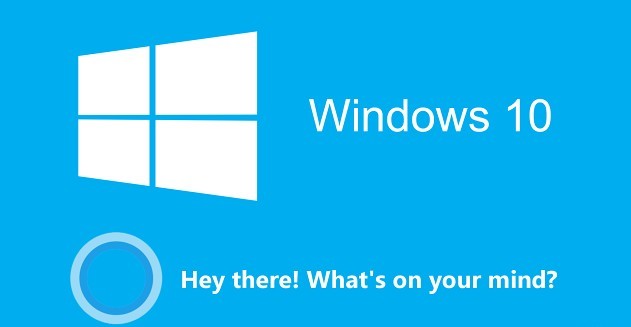

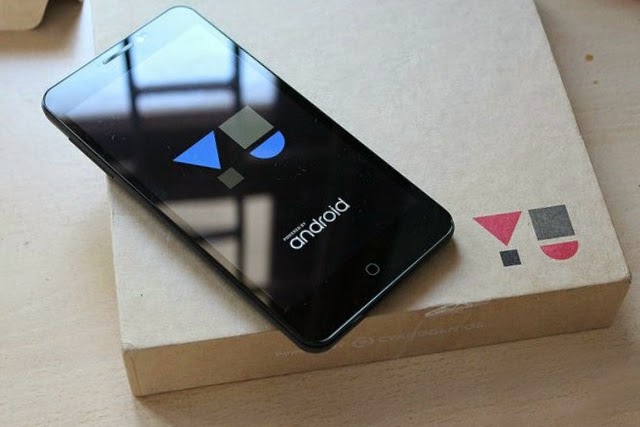
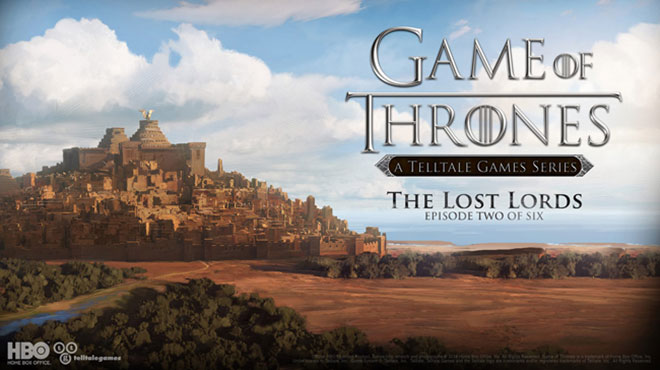


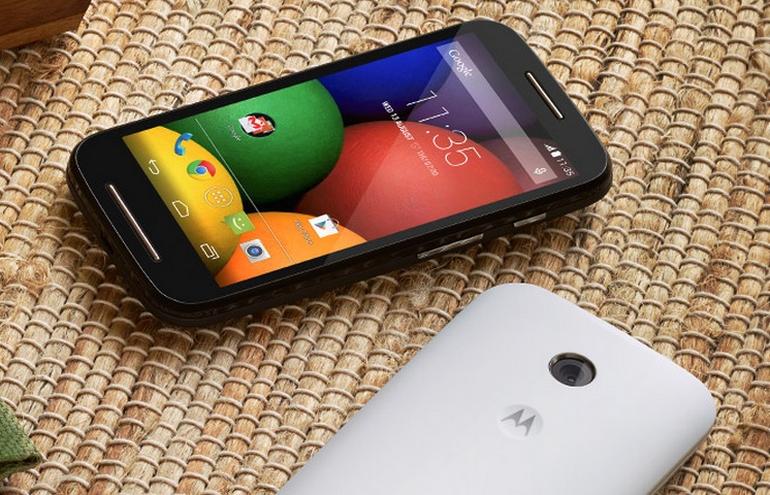








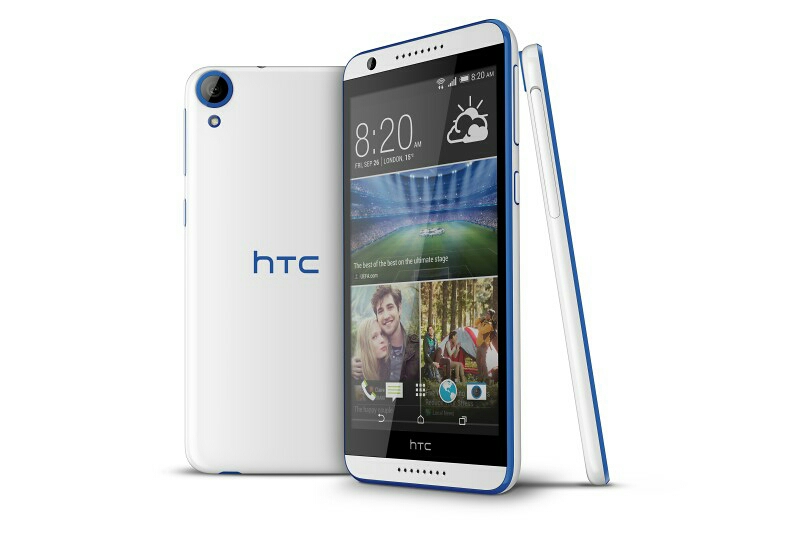

















.jpg)









.jpg)
.jpg)
.jpg)
.jpg)
.jpg)
.jpg)
.jpg)
.jpg)
.jpg)


.jpg)


.jpg)





